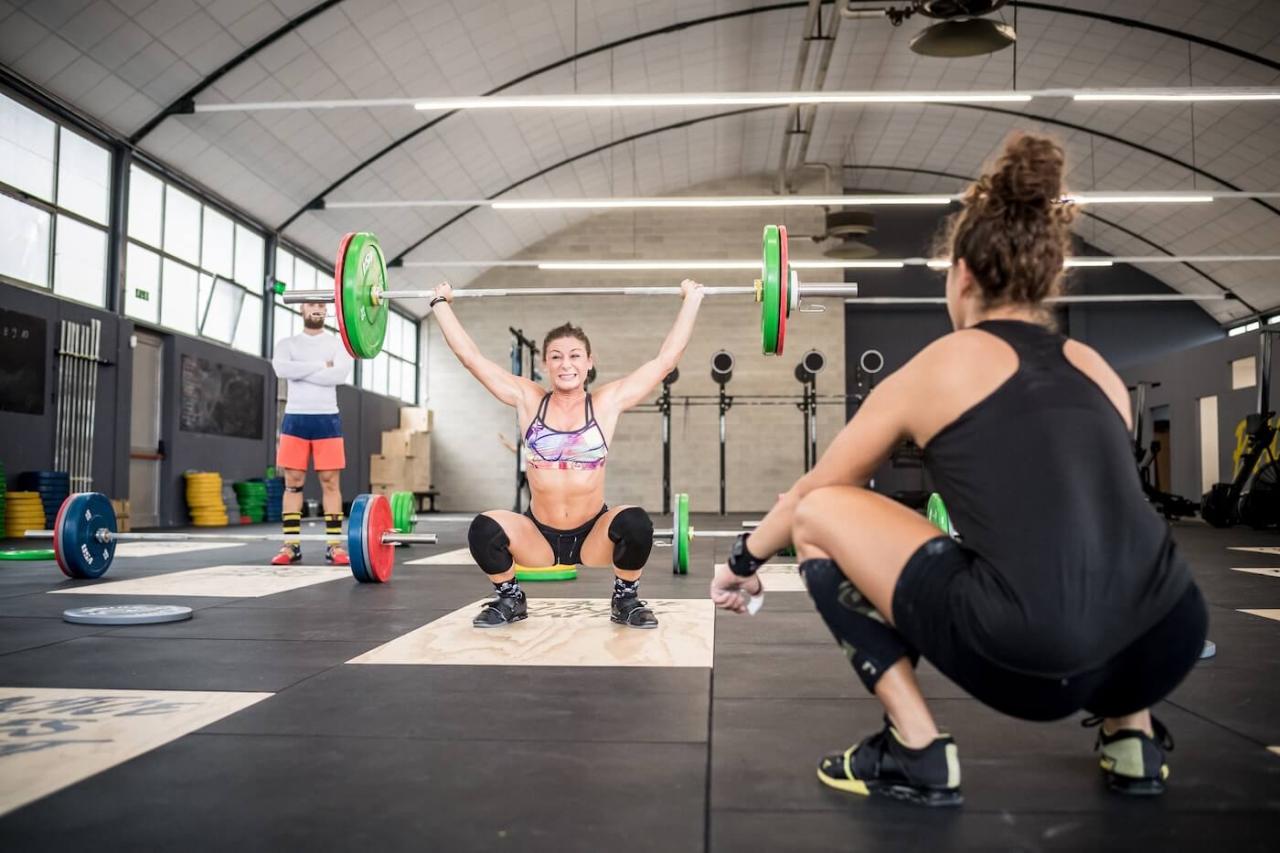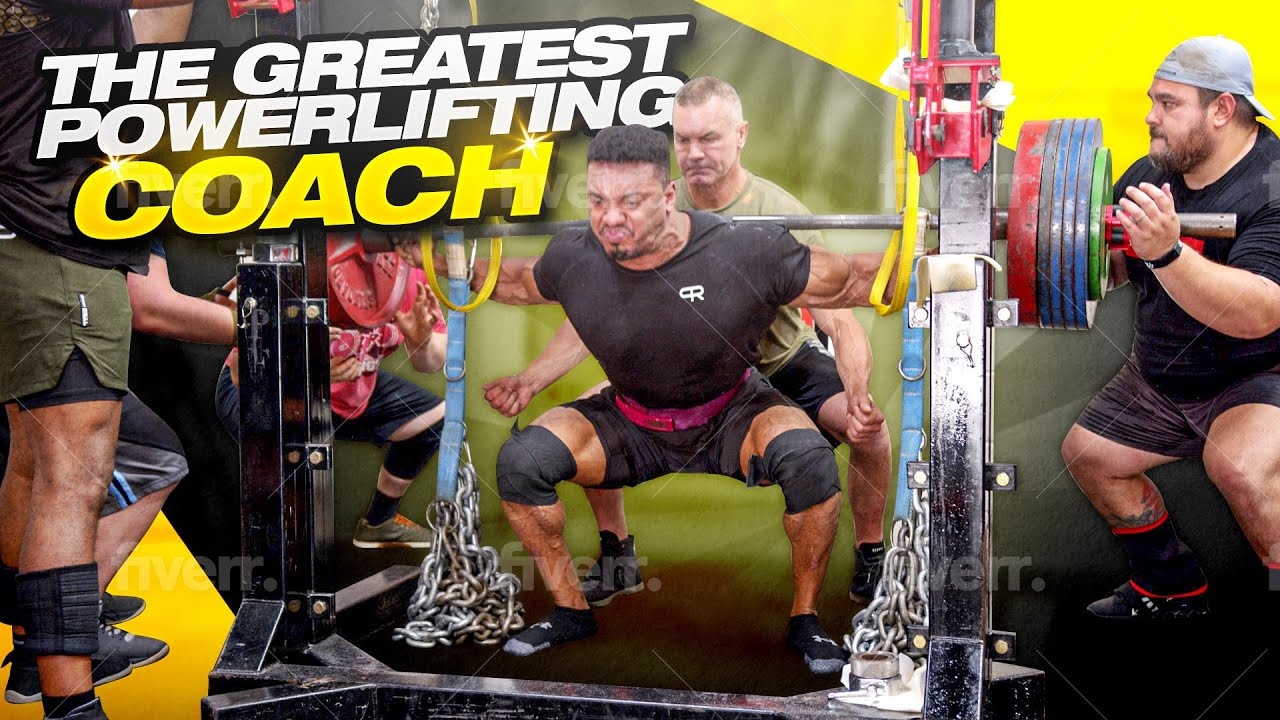Finding the best weightlifting trainer for personalized guidance: It’s not just about finding someone who can yell “One more rep!” (though that can be fun). It’s about finding your own personal Iron Guru, a fitness Yoda who can sculpt your physique into a masterpiece worthy of Michelangelo – or at least, a significantly improved you. This journey involves more than just bench-pressing your way to glory; it’s about finding the right training philosophy, the perfect workout buddy (who also happens to be a certified expert), and a plan that doesn’t leave you feeling like you’ve wrestled a grizzly bear after each session.
This guide will navigate you through the process of selecting a weightlifting trainer, from defining your goals and researching potential candidates to evaluating compatibility and managing expectations. We’ll cover everything from verifying certifications and comparing training styles to understanding pricing structures and creating a safe, effective training environment. Get ready to lift your fitness game to new heights – and maybe even learn a few hilarious gym fails along the way.
Defining Your Fitness Goals and Needs

So, you’re ready to sculpt yourself into a superhero (or at least a significantly stronger version of yourself)? Fantastic! But before you start bench-pressing Volkswagens, let’s talk about finding the right weightlifting trainer. Choosing the right guide is crucial; a bad trainer can lead to injuries, wasted time, and a serious dent in your enthusiasm. Think of it like choosing a chef – you wouldn’t want a pastry chef making your steak, would you?Finding the perfect weightlifting trainer involves understanding your own fitness goals and needs.
Are you aiming for the physique of a Greek god or the strength of a lumberjack? The approach will vary dramatically depending on your aspirations and current fitness level.
Ideal Characteristics of a Strength-Focused Weightlifting Trainer
A trainer specializing in strength improvement should possess several key qualities. First and foremost, they should be deeply knowledgeable about proper lifting techniques – form is everything to avoid injury and maximize gains. Beyond textbook knowledge, a great trainer should be able to adapt their approach to your individual needs and limitations. Look for someone who’s patient, encouraging, and able to provide clear, concise instructions.
Bonus points if they have a sense of humor – let’s face it, grueling workouts are more bearable with a chuckle or two. Finally, a strong trainer will also emphasize proper nutrition and recovery strategies, which are just as important as the workouts themselves.
Training Approaches for Beginners Versus Experienced Lifters
Beginners require a vastly different approach than seasoned weightlifters. Newbies need a solid foundation in fundamental movements, focusing on proper form and gradually increasing weight and intensity. Think building a house – you need a strong base before adding more floors. Experienced lifters, on the other hand, might be working on advanced techniques, increasing intensity, or targeting specific muscle groups for hypertrophy or strength gains.
They might also benefit from more specialized programs incorporating periodization and advanced training methods. A good trainer will understand this difference and tailor their program accordingly. Think of it like this: a beginner’s program is like learning the alphabet; an advanced program is writing a novel.
Questions to Ask Potential Trainers
Before committing to a trainer, ask these crucial questions:
- What is your experience and certification in strength training?
- What is your approach to programming for beginners/experienced lifters?
- How do you assess and address client limitations and injuries?
- What is your philosophy on progressive overload and how do you implement it?
- Can you provide references or testimonials?
These questions will help you assess their expertise and suitability to your needs. Remember, you’re investing in your health and well-being; don’t be afraid to ask tough questions.
Personal Trainer vs. Online Resources: A Comparison
| Trainer Type | Cost | Convenience | Personalization |
|---|---|---|---|
| Personal Trainer | High (but often worth it!) | Moderate (requires scheduling) | Very High (tailored to your needs) |
| Online Resources | Low to Moderate | High (access anytime, anywhere) | Low to Moderate (generic programs) |
Researching and Vetting Potential Trainers

Finding the perfect weightlifting trainer is like finding the perfect pair of lifting shoes – you need the right fit, the right support, and the right level of awesome. Don’t just settle for any old trainer; take the time to properly vet your potential muscle-molder. Your gains (and your joints!) will thank you.The importance of verifying a trainer’s certifications and qualifications cannot be overstated.
Think of it like this: would you trust a brain surgeon who learned by watching YouTube videos? Probably not. Similarly, you need to ensure your trainer possesses the knowledge and skills to guide you safely and effectively through your weightlifting journey. A lack of proper certification could lead to injury, wasted time, and suboptimal results. We’re talking about your body, after all – treat it with respect!
Trainer Certification and Qualification Verification
Verifying a trainer’s credentials involves more than just a quick glance at their website. Look for certifications from reputable organizations like the Certified Strength and Conditioning Specialist (CSCS) through the National Strength and Conditioning Association (NSCA), the USA Weightlifting (USAW) certification for Olympic lifting coaches, or the Certified Personal Trainer (CPT) credential from organizations like the American College of Sports Medicine (ACSM).
Check if their certifications are current and if they’ve completed any continuing education courses to stay updated on the latest training methodologies and safety protocols. You can usually verify certifications directly through the certifying organization’s website. Don’t be shy – ask to see copies of their certifications!
Finding Trainers Specialized in Weightlifting Styles, Finding the best weightlifting trainer for personalized guidance
Finding a trainer experienced in your specific weightlifting style is crucial for maximizing your progress and minimizing your risk of injury. For example, a powerlifter needs a trainer who understands the nuances of the squat, bench press, and deadlift, while an Olympic lifter requires a coach proficient in the snatch and clean & jerk. To find trainers with specific expertise, utilize online search engines focusing your search terms.
Finish your research with information from best strength training program.
For example, searching for “Olympic lifting coach [your city]” or “powerlifting coach near me” will yield more relevant results. Check out gyms specializing in these styles as well; they often employ trainers with the necessary experience. Look at trainer profiles on fitness platforms and review sites; many highlight their specializations. Networking within your local weightlifting community can also lead you to highly skilled trainers.
Comparing Trainer Credentials and Experience
Creating a simple comparison chart can help you objectively evaluate potential trainers. Use a spreadsheet or a piece of paper and list the following information for each candidate:
| Trainer Name | Certifications | Years of Experience | Specialization | Client Testimonials/Reviews | Consultation Fee/Session Rate |
|---|---|---|---|---|---|
| [Trainer 1 Name] | [List Certifications] | [Number] | [Specialization] | [Summary of Reviews] | [Price] |
| [Trainer 2 Name] | [List Certifications] | [Number] | [Specialization] | [Summary of Reviews] | [Price] |
This organized approach allows for easy comparison and helps you make an informed decision based on your specific needs and preferences. Remember, the cheapest option isn’t always the best option; prioritize experience, qualifications, and a good fit over price alone.
Resources for Finding Qualified Weightlifting Trainers
Several resources can assist you in your search for a qualified weightlifting trainer.Websites such as the NSCA and ACSM websites often have directories of certified trainers. Many gyms and fitness studios also maintain lists of their trainers and their qualifications on their websites. Online fitness platforms and review sites (like Yelp or Google My Business) allow you to read client reviews and assess a trainer’s reputation.
Don’t underestimate the power of word-of-mouth; ask fellow weightlifters for recommendations. Local athletic clubs or college athletic departments might also have connections to skilled trainers.
Evaluating Trainer-Client Compatibility: Finding The Best Weightlifting Trainer For Personalized Guidance
Finding the perfect weightlifting trainer isn’t just about finding someone who knows their biceps from their triceps; it’s about finding a training partner who understands your quirks, motivates you in your unique way, and won’t make you want to hurl your protein shake across the room. A strong trainer-client rapport is the secret sauce to success, so choosing wisely is crucial.Trainer-client compatibility is paramount for a successful fitness journey.
A mismatch can lead to frustration, lack of progress, and ultimately, abandoning your goals. Think of it like choosing a romantic partner – you need chemistry, shared understanding, and a willingness to work together. Only then can you build a relationship that fosters growth and achievement.
Assessing Trainer-Client Rapport During Consultations
The initial consultation is your audition for the training relationship. Pay close attention to how the trainer communicates. Do they listen actively to your concerns and goals? Do they answer your questions thoroughly and patiently, or do they rush through things, seeming more interested in selling their services than understanding your needs? A good trainer will ask clarifying questions, demonstrating genuine interest in your background and fitness aspirations.
Observe their body language – are they engaged and approachable, or distracted and dismissive? A comfortable, conversational atmosphere is a good sign. Imagine a scenario where the trainer interrupts you constantly or dismisses your concerns about previous injuries. This would be a red flag indicating a lack of attentiveness and empathy. Conversely, a trainer who actively listens, asks insightful questions, and validates your feelings fosters a positive and collaborative environment.
Identifying Potential Red Flags During Initial Meetings
Before you sign on the dotted line, be aware of some potential warning signs. A trainer who guarantees unrealistic results (e.g., “Lose 20 pounds in two weeks!”) is likely more interested in your wallet than your well-being. Similarly, a trainer who pushes you to do exercises that cause pain or discomfort before you’re ready is a major red flag.
A lack of certification or qualifications, or an unwillingness to provide references, should also raise concerns. Imagine a scenario where a trainer ignores your expressed discomfort during a workout, insisting you push through the pain. This demonstrates a disregard for your safety and well-being. Alternatively, a trainer who modifies exercises to accommodate your limitations and checks in regularly about your comfort level shows a commitment to your health and progress.
Establishing Clear Communication and Expectations
Open and honest communication is the cornerstone of any successful relationship, including the trainer-client one. Discuss your goals, limitations, and preferences openly. Ask about their training philosophy, their experience with clients similar to you, and their approach to dealing with setbacks. Agree on a clear plan, including workout frequency, session duration, and methods of communication. A written agreement outlining these details can help prevent misunderstandings down the road.
Consider a scenario where you and your trainer fail to agree on a realistic timeline for achieving your goals. This lack of alignment can lead to frustration and ultimately derail your progress. Conversely, a collaborative approach where both parties agree on attainable milestones and celebrate achievements along the way fosters a supportive and encouraging atmosphere.
Examples of Poor Trainer-Client Fit
Sometimes, even with the best intentions, a trainer-client relationship just doesn’t click. For example, a highly structured, detail-oriented trainer might not be a good fit for a client who prefers a more flexible and spontaneous approach. Similarly, a trainer with a very intense, competitive style might overwhelm a client who prefers a gentler, more supportive approach. Imagine a scenario where a client thrives on social interaction during workouts, while their trainer prefers quiet, focused sessions.
This mismatch in personality and training styles can hinder the client’s motivation and enjoyment of the fitness process. Alternatively, a client who values social interaction might find a perfect fit with a trainer who incorporates group activities and team challenges into their training sessions.
Understanding the Training Process and Structure
So, you’ve found your perfect weightlifting guru (high five!). Now, let’s decode the mysterious world of training plans – because a good plan is the difference between looking like a superhero and looking like you wrestled a badger. Think of it like this: a poorly planned workout is like baking a cake without a recipe; you might get
something* edible, but it probably won’t be a masterpiece.
A typical weightlifting program is a carefully orchestrated symphony of sweat, iron, and strategic rest. It’s not just about randomly lifting heavy things; it involves a structured progression designed to challenge your muscles and help you achieve your goals. This usually involves a combination of different exercises targeting various muscle groups, carefully planned sets and repetitions (reps), and a well-defined rest schedule.
The whole thing is built around gradual increases in weight, intensity, or volume to continually challenge your body and force it to adapt and grow stronger.
Components of a Weightlifting Training Program
A well-structured weightlifting program typically includes several key components. First, there’s the exercise selection itself, carefully chosen to target specific muscle groups and achieve specific training goals. Next, we have the sets and reps, which dictate how many times you perform each exercise and how many sets (groups of repetitions) you complete. Rest periods between sets are crucial for recovery and optimal performance.
Finally, the program’s progression involves a systematic increase in training volume (total sets and reps), intensity (weight lifted), or both over time, ensuring continuous improvement. For example, a beginner might start with 3 sets of 8-12 reps, gradually increasing the weight or reps over several weeks. A more advanced lifter might incorporate more complex training schemes.
Methods for Creating Personalized Training Plans
Trainers use a variety of methods to tailor training plans to individual needs and goals. One common approach is to conduct a thorough assessment of the client’s current fitness level, experience, and goals. This might involve physical assessments, like measuring body composition or testing strength levels, along with discussions about lifestyle and dietary habits. Based on this assessment, the trainer can then select appropriate exercises, sets, reps, and rest periods, ensuring the program is challenging but safe and effective.
They might also consider factors like any injuries or limitations the client has. Another approach is to use software or apps that can help create personalized plans based on specific input parameters. These tools can offer a more data-driven and efficient way to design training programs.
Comparison of Training Methodologies
Linear progression, a cornerstone of many beginner programs, involves consistently increasing the weight, reps, or sets each week. Think of it as a straight line upwards on a graph. This works great for beginners who are rapidly adapting to training. Periodization, however, is a more advanced approach that involves cycling through different training phases, varying the volume, intensity, and type of training over time.
Imagine a wave pattern on a graph, with peaks and valleys of intensity. This approach allows for planned periods of high intensity followed by recovery and prevents overtraining. Other methods include conjugate training (focusing on different training qualities each cycle), and undulating periodization (varying training volume and intensity within a single week). The choice depends on the client’s experience, goals, and recovery capacity.
Evaluating Training Program Effectiveness
Measuring the success of a weightlifting program is more than just stepping on the scale. While weight loss or gain can be an indicator, it’s crucial to consider multiple factors. Tracking progress involves monitoring several key metrics: strength increases (measured by how much weight you can lift), improvements in body composition (changes in muscle mass and body fat percentage), and performance improvements in specific exercises.
Regularly assessing these factors helps the trainer and client determine if the program is effective and make adjustments as needed. For instance, if strength isn’t increasing after several weeks, the program may need to be modified. Likewise, if the client experiences consistent pain or fatigue, it’s a clear signal that adjustments are required. The key is consistent monitoring and open communication between trainer and client.
Managing Costs and Expectations

Finding the perfect weightlifting trainer is like finding the perfect pair of jeans – you want a good fit, but the price shouldn’t break the bank (or your spirit). Let’s tackle the financial and motivational aspects of your weightlifting journey. Understanding the costs involved and setting realistic expectations are crucial for long-term success. Think of it as building a strong foundation for your fitness, not just lifting heavy things.Pricing structures for weightlifting training vary wildly, depending on the trainer’s experience, location, and the type of training offered.
Some trainers charge by the session, others by the month, and some even offer package deals. Understanding these different approaches will help you make an informed decision and avoid any unexpected financial surprises.
Pricing Structures for Weightlifting Training Services
Different trainers utilize various pricing models. One common approach is charging per session, perhaps $50-$100 per hour, depending on location and trainer experience. Monthly packages, offering a set number of sessions for a fixed price, provide a predictable budget. For example, a monthly package might cost $300-$600 for twice-weekly sessions. Finally, some trainers offer package deals for a block of sessions, offering discounts for pre-payment.
A package of ten sessions could cost $400-$800, representing a potential saving compared to individual sessions. These prices are estimates and can vary significantly based on geographic location and trainer qualifications.
Negotiating Rates and Payment Plans
Don’t be afraid to discuss pricing with potential trainers. Many are willing to negotiate, especially if you’re committing to a longer-term package. Consider suggesting a slightly lower rate in exchange for a longer commitment, or explore the possibility of a payment plan to spread the cost over several months. Remember, clear communication is key – explain your budget constraints politely and professionally.
A trainer who values your business will be open to finding a mutually agreeable solution. For example, you could propose paying for a three-month package upfront at a discounted rate or spreading the cost over three months with a small added fee.
Setting Realistic Goals and Expectations for Progress
Weightlifting isn’t a magic bullet; it requires dedication, consistency, and patience. Setting unrealistic expectations can lead to discouragement and ultimately derail your progress. Instead, focus on small, achievable goals. For example, instead of aiming to lose 20 pounds in a month, aim to lose 2-3 pounds per week, coupled with measurable improvements in strength or endurance. Remember to celebrate your small victories along the way – each milestone achieved is a testament to your hard work and dedication.
Consistency is key; progress takes time.
Budget Template for Managing the Costs Associated with Weightlifting Training
| Month | Training Costs | Supplements (Optional) | Gym Membership (If Applicable) | Total Monthly Cost |
|---|---|---|---|---|
| July | $300 | $50 | $30 | $380 |
| August | $300 | $50 | $30 | $380 |
| September | $300 | $50 | $30 | $380 |
This is a sample budget; adjust the figures to reflect your chosen trainer’s pricing and your personal expenses. Remember to factor in additional costs, such as travel to and from training sessions, and any necessary equipment purchases. Careful budgeting ensures your weightlifting journey is sustainable and enjoyable. Remember, investing in your health is an investment in your future.
Illustrating Ideal Training Environments
Finding the perfect weightlifting environment is like finding the perfect pair of lifting shoes – crucial for performance and injury prevention. The right setting can transform your workouts from grueling chores into exhilarating experiences, while the wrong one can leave you feeling frustrated and potentially injured. Let’s explore what makes a training environment truly ideal.The ideal weightlifting environment prioritizes safety, effectiveness, and motivation.
Imagine a space bathed in natural light, with a clean, organized layout that inspires focus. The air is fresh, not stale and stuffy. Equipment is well-maintained, regularly inspected, and readily available. The atmosphere is supportive and encouraging, free from intimidation or judgment. This isn’t just about aesthetics; it’s about creating a space conducive to optimal performance and injury reduction.
Gym Versus Home Training Environments
Training in a gym offers access to a wider variety of equipment, expert guidance (from trainers and other members), and a built-in social aspect. However, gyms can be crowded, expensive, and sometimes lack the personalized attention you might desire. Home gyms, on the other hand, offer privacy, convenience, and cost savings in the long run. However, space limitations, equipment costs, and the lack of immediate expert help can be significant drawbacks.
Trainer Adaptations Based on Environmental Limitations
A skilled trainer can adapt training plans to accommodate virtually any environment. For example, a trainer working with a client in a small apartment might substitute bodyweight exercises for machine-based ones, utilizing space efficiently. If a client only has access to limited equipment, the trainer could design a program focusing on compound movements that work multiple muscle groups simultaneously.
Similarly, a trainer working in a crowded gym might schedule workouts during off-peak hours to ensure ample space and equipment availability. The key is creativity and adaptability.
Safety Considerations for Weightlifting Training
Prioritizing safety is paramount in weightlifting. Proper form is essential to prevent injuries. This involves understanding the correct techniques for each exercise, maintaining a stable posture, and controlling the weight throughout the movement. Using a spotter is also vital, especially when lifting heavy weights. A spotter provides assistance if the lifter struggles to complete a repetition, preventing dropped weights and potential injuries.
Spotting techniques vary depending on the exercise, but the core principle is to provide safe and controlled assistance. Regular equipment inspections are also vital to ensure that everything is functioning correctly and that no safety hazards exist. Finally, knowing your limits and respecting them is essential. Don’t push yourself beyond your capabilities, especially when starting out.
Conclusive Thoughts

So, there you have it – your roadmap to finding the perfect weightlifting trainer. Remember, the ideal trainer isn’t just about brute strength (though that’s a plus); it’s about finding someone who understands your goals, motivates you effectively, and keeps you injury-free. The process might feel a bit like dating (lots of consultations, careful evaluations), but the payoff – a stronger, healthier, and more confident you – is well worth the effort.
Now go forth, and conquer those weights!
